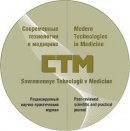
Pathophysiological Substantiation of Epidural Administration of Tenoxicam in Dorsalgia Treatment
The aim of the investigation is to assess the efficiency of Tenoxicam epidural administration, and represent pathophysiological substantiation of new techniques of dorsalgias treatment.
Materials and Methods. There have been examined 75 patients with intense lumbar pain syndrome who underwent epidural pharmacotherapy of pain syndrome. The 1st group (n=50) had epidural Tenoxicam introduction, by 20 mg in 10–20 ml of saline solution, the control group (n=25) was given the combination of corticosteroids and local anesthetics. The pain syndrome dynamics in the process of treatment was assessed using visual-analog scale and qualitative and quantitative method of pain syndrome assessment.
Results. The concept of degenerative cascade in dorsalgia pathogenesis has been represented. Short- and long-term treatment results of intense lumbar pain syndrome by Tenoxicam epidural introduction have shown its efficiency. Compared to the use of combination of local anesthetics and glucocorticosteroids, the present method reduces the period of treatment of patients with dorsalgias, and contributes to marked regress of pain syndrome and prolonged remissions.
- WHO Department of noncomunicable disease management. Low back pain initiative. Geneva, 1999.
- Kamchatnov P.R. Consilium medicum 2004; 8: 557–561.
- Boronstayn D. Mezhdunar Med Z 2000; 35: 146–154.
- Nazarov V.M., Bogomolov S.D., Troshin V.D., Zhilyaev E.A. Epidural’naya farmakoterapiya boli [Epidural pharmacotherapy of pain]. Nyzhny Novgorod: Izd-vo NGMA; 2001.
- Hadjipavlou A.G., Tzermiadianos M.N., Bogduk N. et al. The pathophysiology of disc degeneration. J Bone Joint Surg Br 2008; 90(10): 1261–1270.
- Bogomolov S.D., Nazarov V.M. Tezisy Rossiyskoy nauchno-prakticheskoy konferentsii [Abstracts of Russian scientific conference]. Novosibirsk; 1999.










